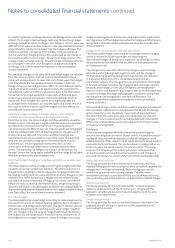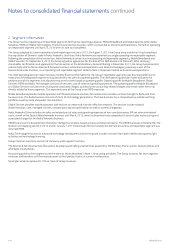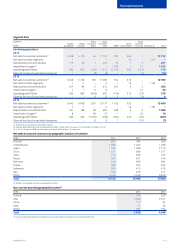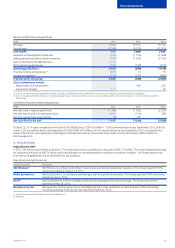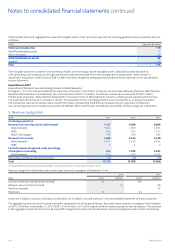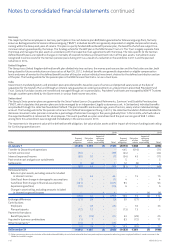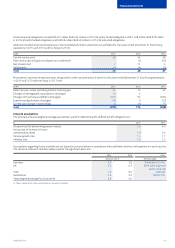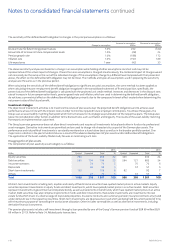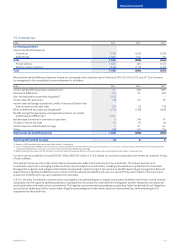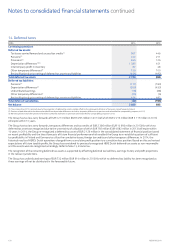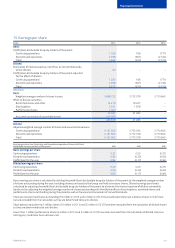Nokia 2014 Annual Report Download - page 148
Download and view the complete annual report
Please find page 148 of the 2014 Nokia annual report below. You can navigate through the pages in the report by either clicking on the pages listed below, or by using the keyword search tool below to find specific information within the annual report.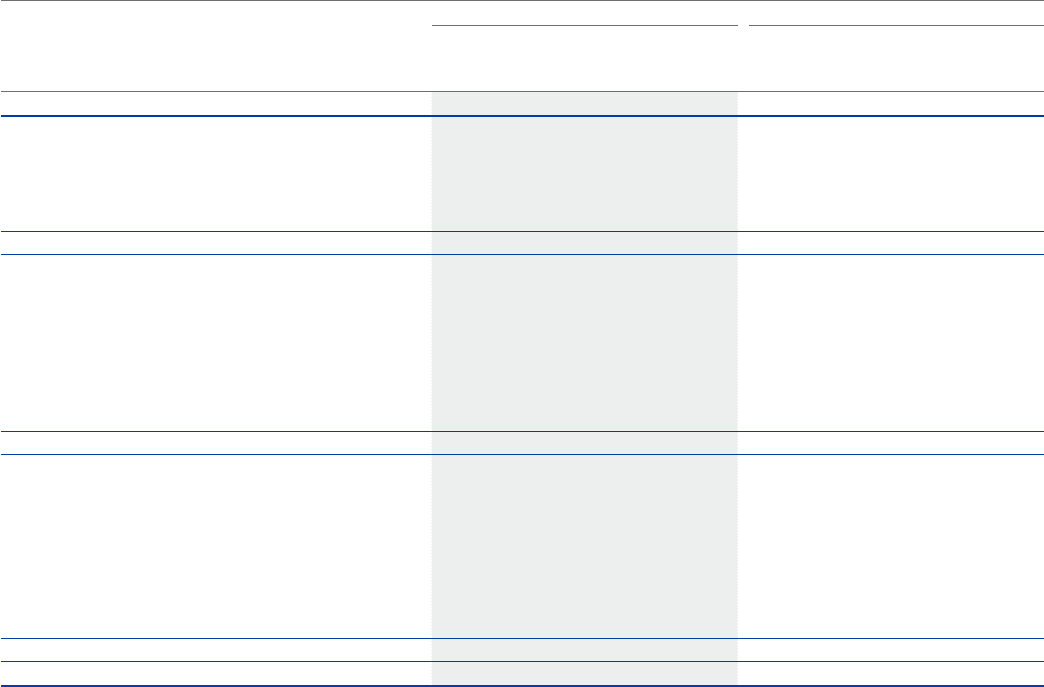
146 NOKIA IN 2014
Germany
The majority of active employees in Germany participate in the cash balance plan BAP (Beitragsorientierter Alterversorgungs Plan), formerly
known as Beitragsorientierte Siemens Alterversorgung (“BSAV”). Individual benets are generally dependent on eligible compensation levels,
ranking within the Group and years of service. This plan is a partly funded dened benet pension plan, the benets of which are subject to a
minimum return guaranteed by the Group. The funding vehicle for the BAP plan is the NSN Pension Trust e.V. The Trust is legally separate from
the Group and manages the plan assets in accordance with the respective trust agreements with the Group. The risks specic to the German
dened benet plans are related to changes in mortality of covered members and investment return of the plan assets. Curtailments were
recognized in service costs for the German pension plans during 2013 as a result of a reduction in the workforce in 2013 and the planned
reduction in 2014.
United Kingdom
The Group has a United Kingdom dened benet plan divided into two sections: the money purchase section and the nal salary section, both
being closed to future contributions and accruals as of April 30, 2012. Individual benets are generally dependent on eligible compensation
levels and years of service for the dened benet section of the plan and on individual investment choices for the dened contribution section
of the plan. The funding vehicle for the pension plan is the NSN Pension Plan that is run on a trust basis.
India
Government-mandated gratuity and provident plans provide benets based on years of service and projected salary levels at the date of
separation for the Gratuity Plan and through an interest rate guarantee on existing investments in a Government-prescribed Provident Fund
Trust. Gratuity Fund plan assets are invested and managed through an insurance policy. Provident Fund Assets are managed by NSN PF Trustees
through a pattern prescribed by the Government in various xed income securities.
Switzerland
The Group’s Swiss pension plans are governed by the Swiss Federal Law on Occupational Retirements, Survivors’ and Disability Pension plans
(“BVG”), which stipulates that pension plans are to be managed by an independent, legally autonomous unit. In Switzerland, individual benets
are provided through the collective foundation Profond. The plan’s benets are based on age, years of service, salary and an individual old age
account. The funding vehicle for the pension scheme is the Profond Vorsorgeeinrichtung. In 2013, the collective foundation Profond decided to
decrease conversion rates (pension received as a percentage of retirement savings) in ve years gradually from 7.2% to 6.8%, which will reduce
the expected benets at retirement for all employees. This event qualied as a plan amendment and the past service gain of EUR 1 million
arising from this amendment was recognized immediately in the service cost in 2013.
The movements in the present value of the dened benet obligation, fair value of plan assets and the impact of minimum funding/asset ceiling
for Continuing operations are:
EURm
2014 2013
Present
value of
obligation
Fair value
of plan
assets
Impact of
minimum
funding/
asset ceiling Total
Present
value of
obligation
Fair value
of plan
assets
Impact of
minimum
funding/
asset ceiling Total
At January 1 (1 453) 1 261 (7) (199) (2 073) 1 808 (3) (268)
Transfer to Discontinued operations –445 (516) –(71)
Current service cost (39) – – (39) (44) ––(44)
Interest (expense)/income (59) 52 –(7) (54) 43 –(11)
Past service cost and gains on curtailments – – – – 5 – –5
Settlements 9(8) – 1 12 (8) –4
(89) 44 – (45) (81) 35 – (46)
Remeasurements:
Return on plan assets, excluding amounts included
ininterest income –44 –44 –15 –15
Gain/(loss) from change in demographic assumptions (1) – – (1) 4 – –4
Gain/(loss) from change in nancial assumptions (321) – – (321) 93 ––93
Experience gain/(loss) (16) – – (16) 6 – –6
Change in asset ceiling, excluding amounts included
ininterest (expense)/income – – 4 4 – – (4) (4)
(338) 44 4(290) 103 15 (4) 114
Exchange dierences (31) 28 –(3) 30 (27) –3
Contributions:
Employers –28 –28 –33 –33
Plan participants (12) 12 – – (13) 13 ––
Payments from plans:
Benet payments 55 (35) –20 53 (28) –25
Acquired in business combinations (1) 1 – – 83 (72) –11
Other movements(1) (15) 4 – (11) – – ––
(4) 38 – 34 153 (81) – 72
At December 31 (1 884) 1 387 (3) (500) (1 453) 1 261 (7) (199)
(1) Other movements relate to the inclusion of the dened benet liability of end of service benets that have previously been reported as other long-term employee liabilities in certain countries in the
Middle East and Africa region.
Notes to consolidated nancial statements continued


